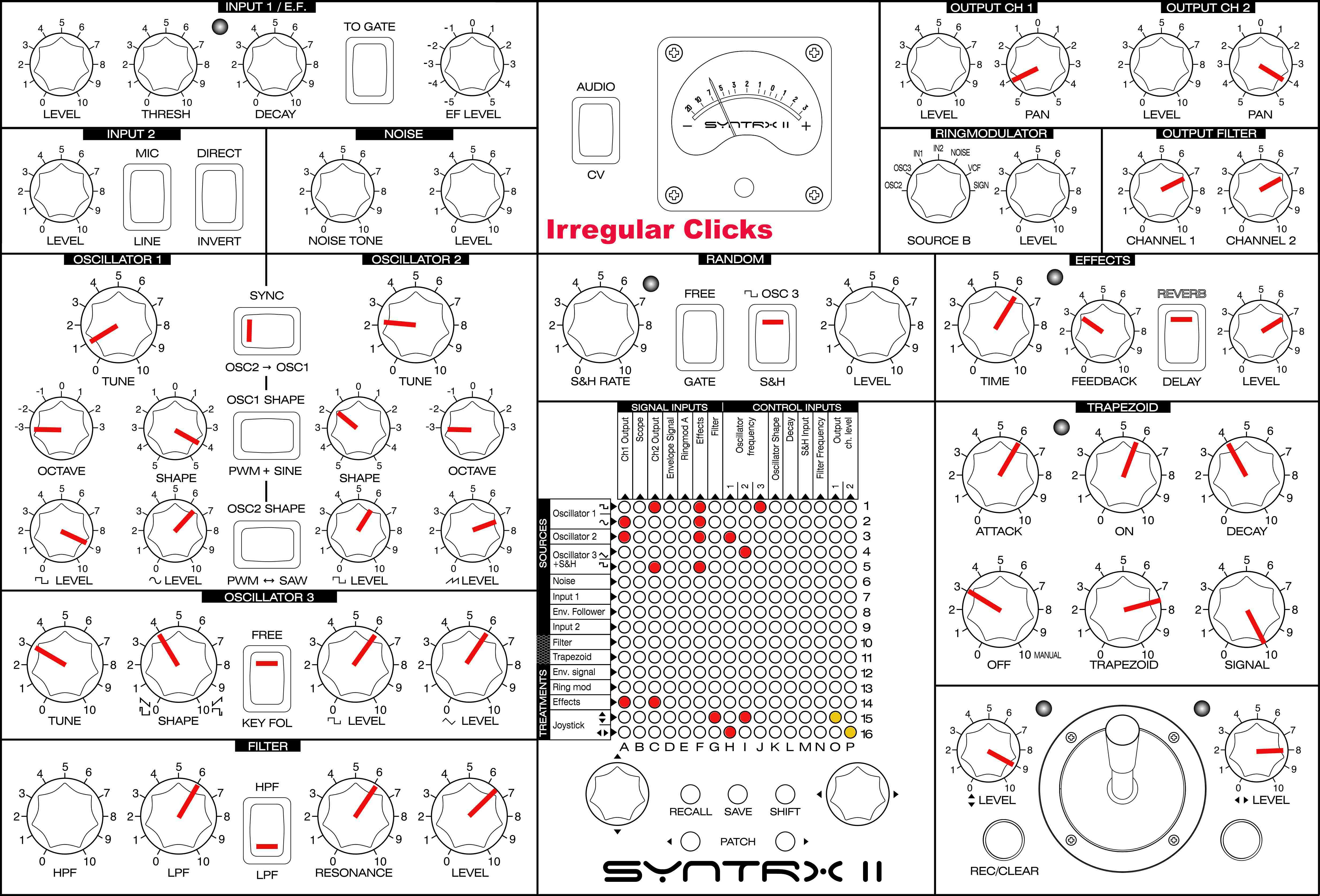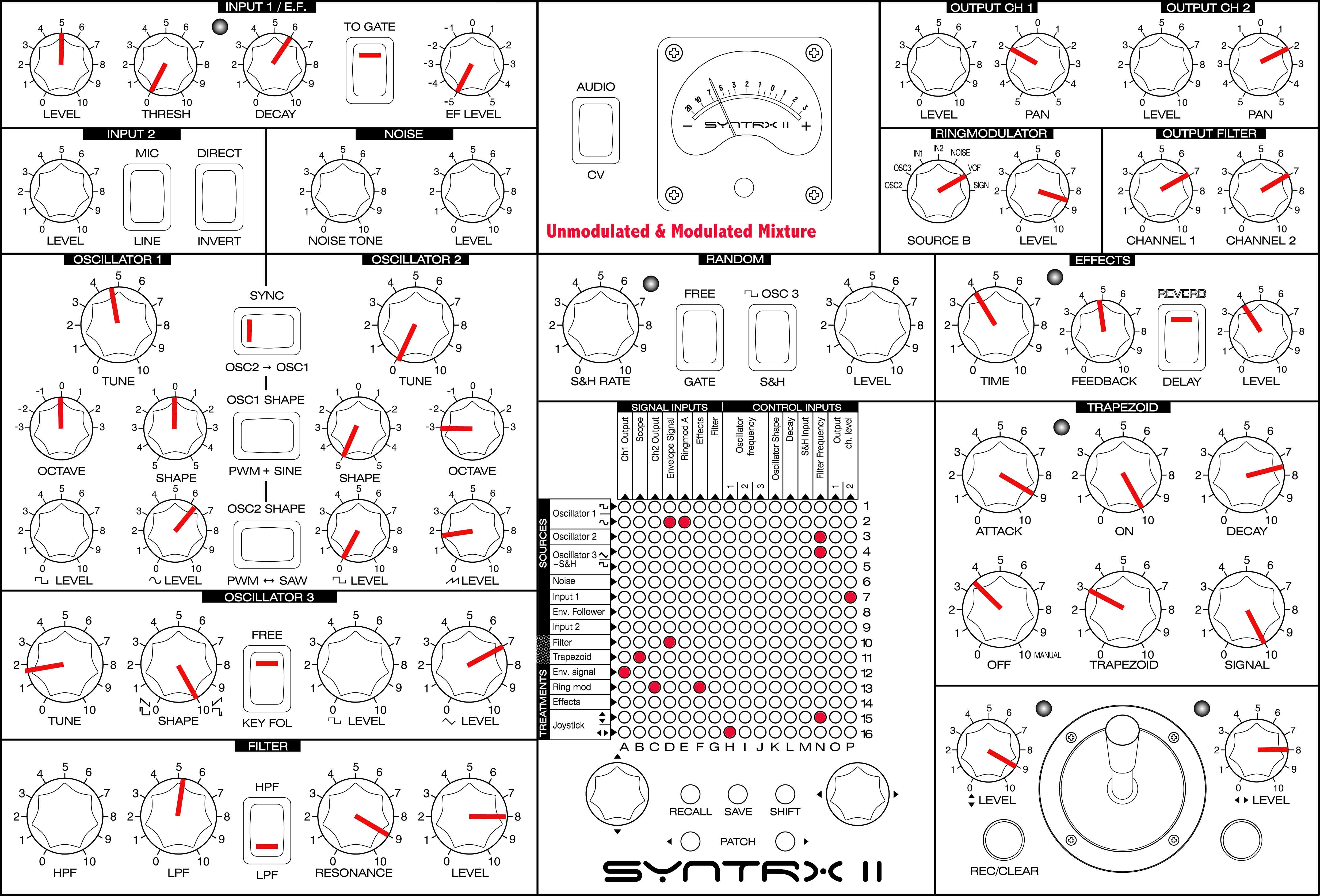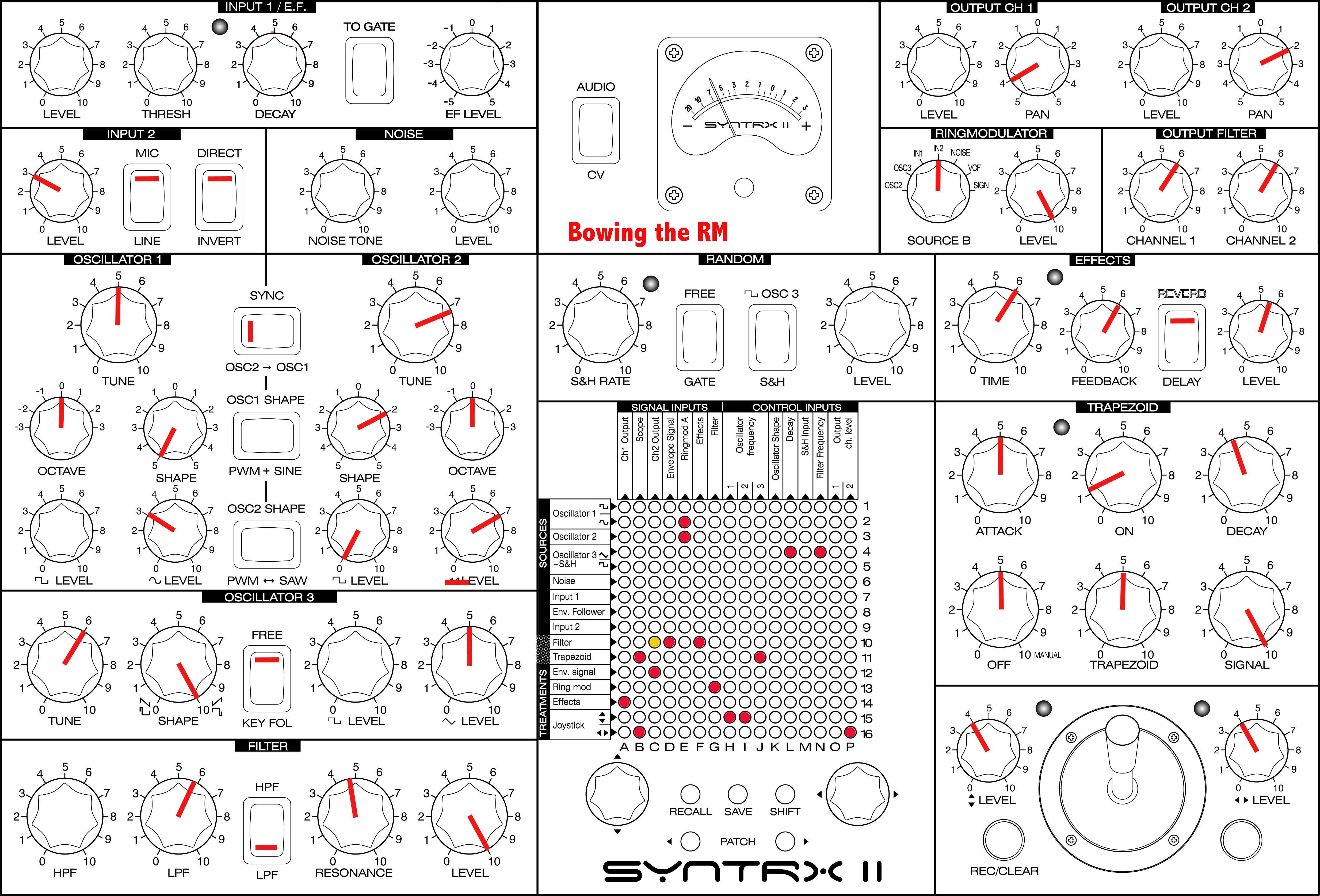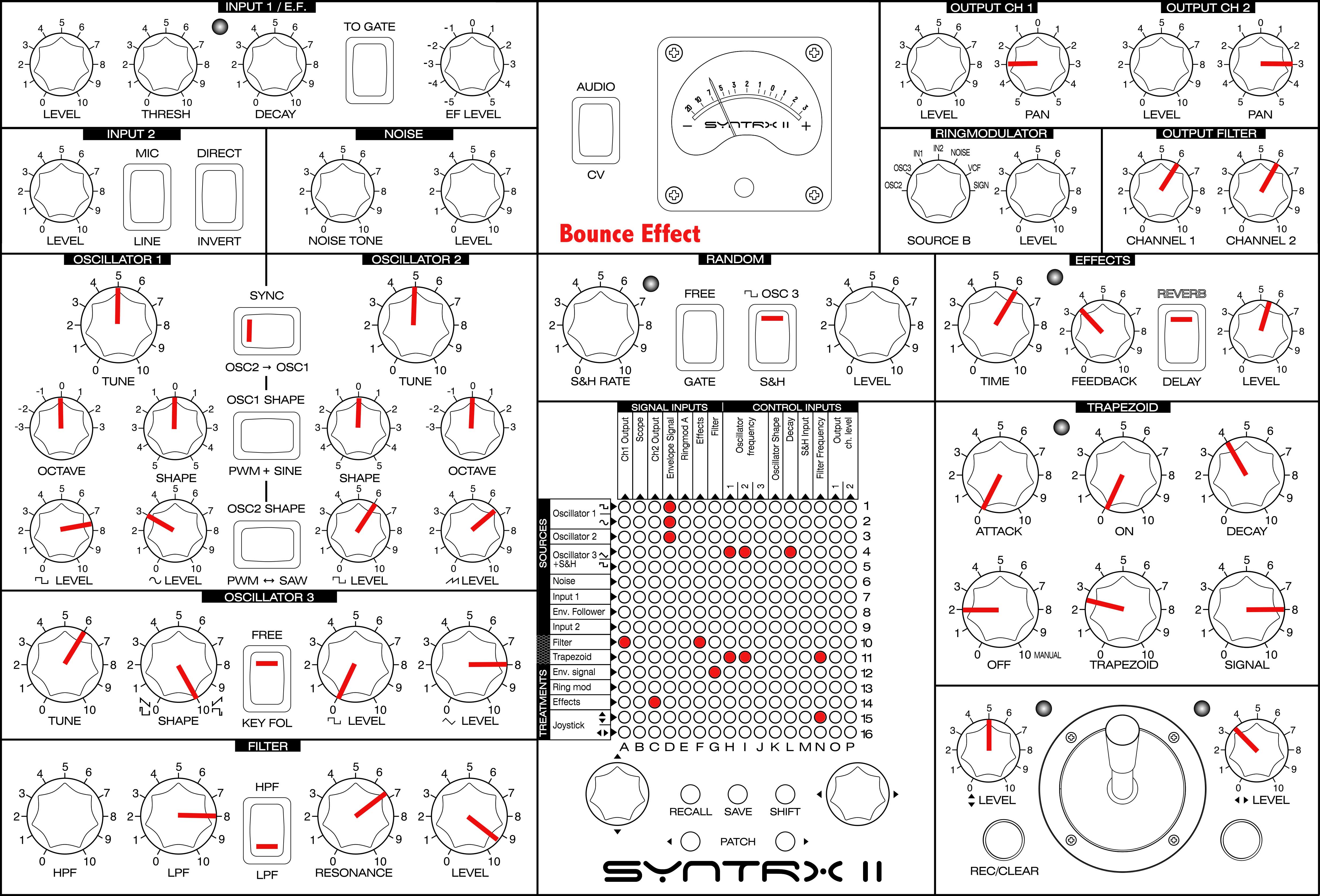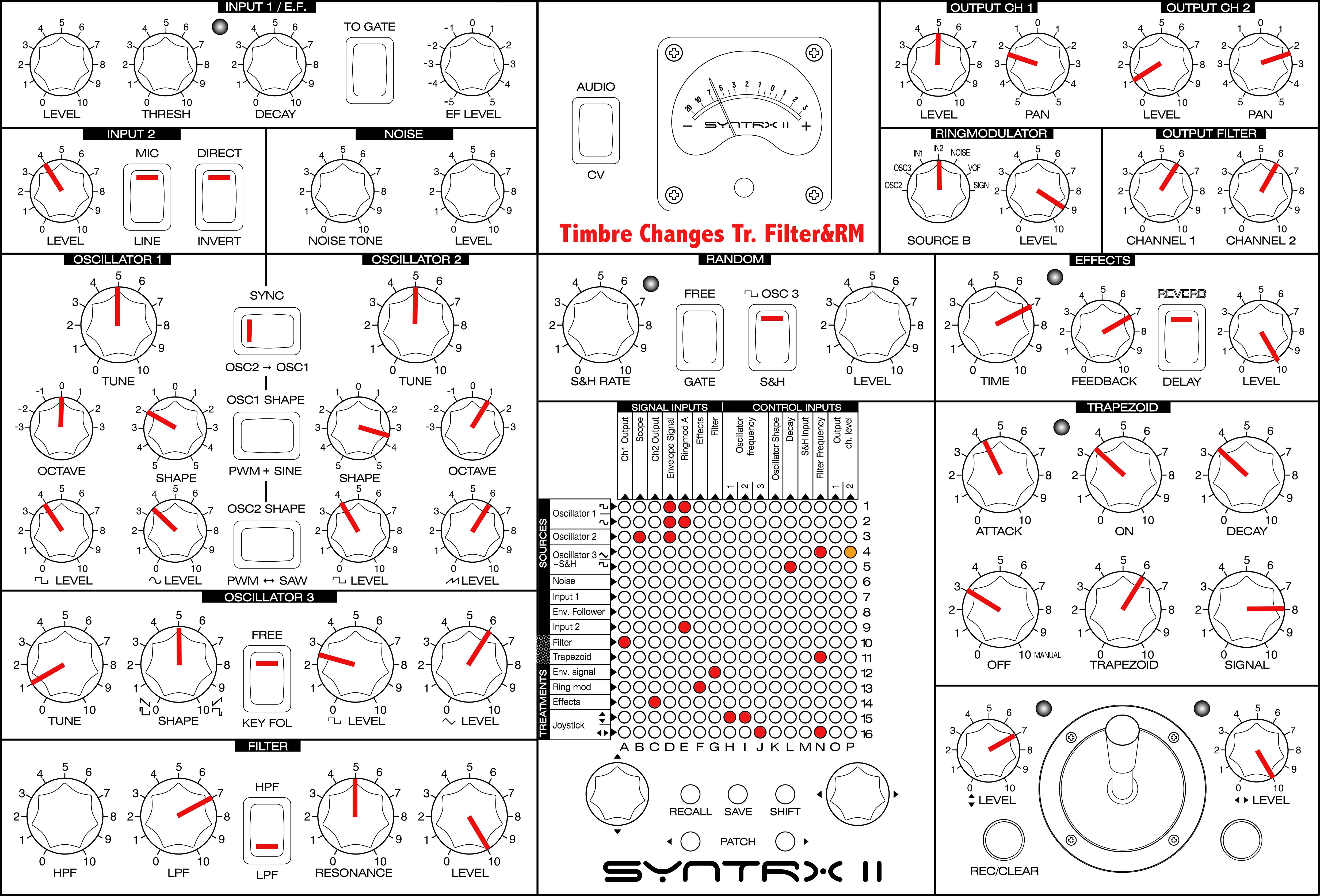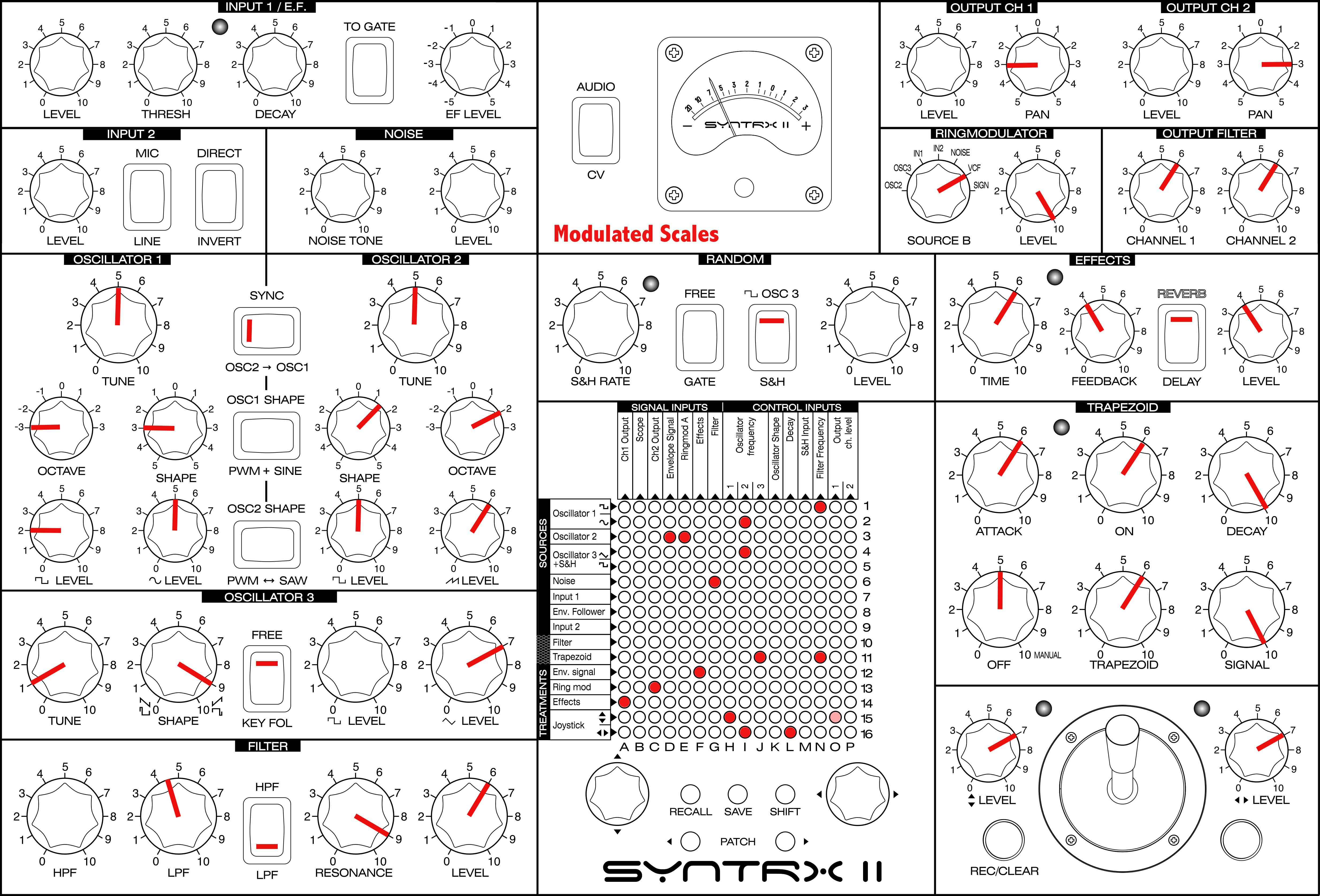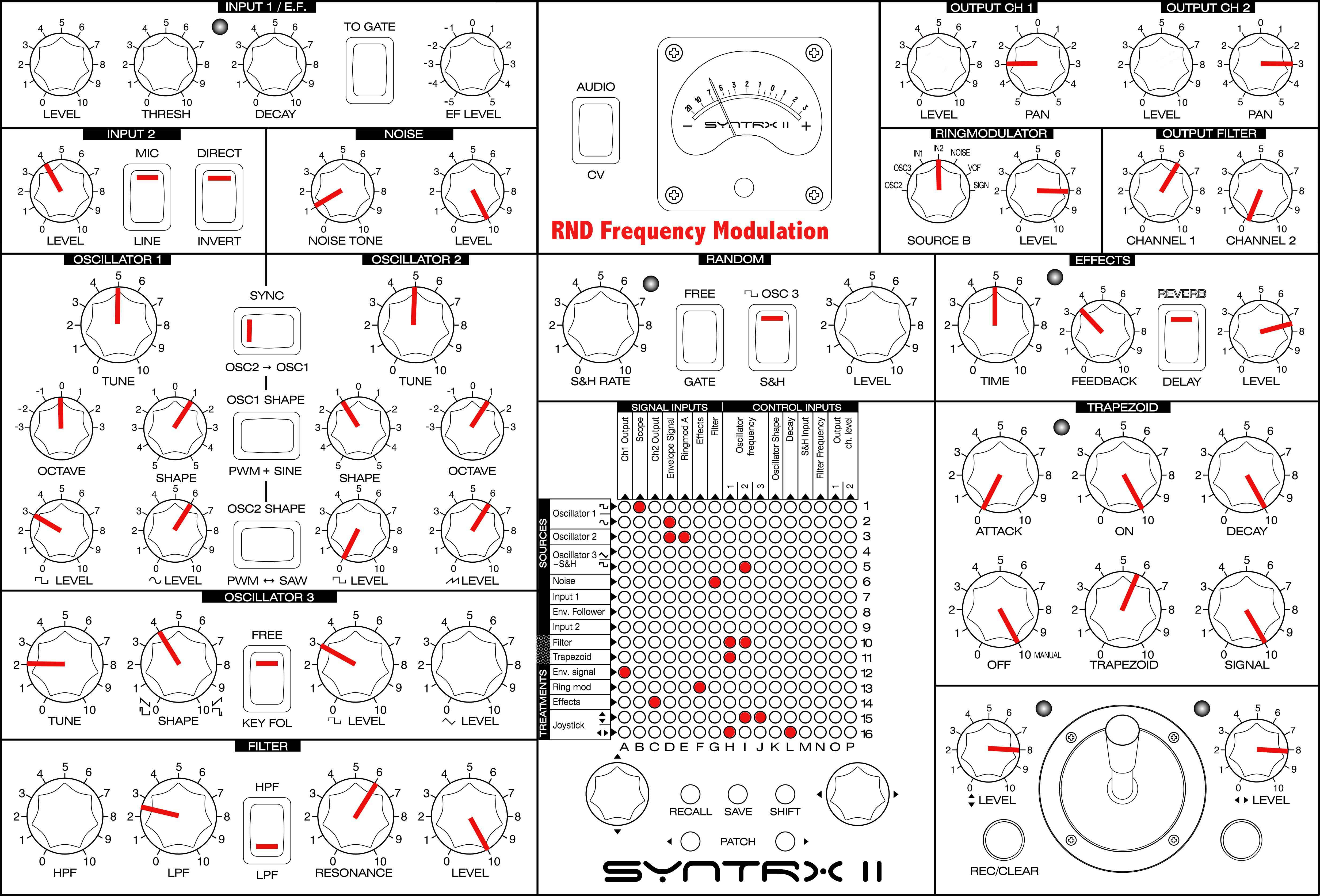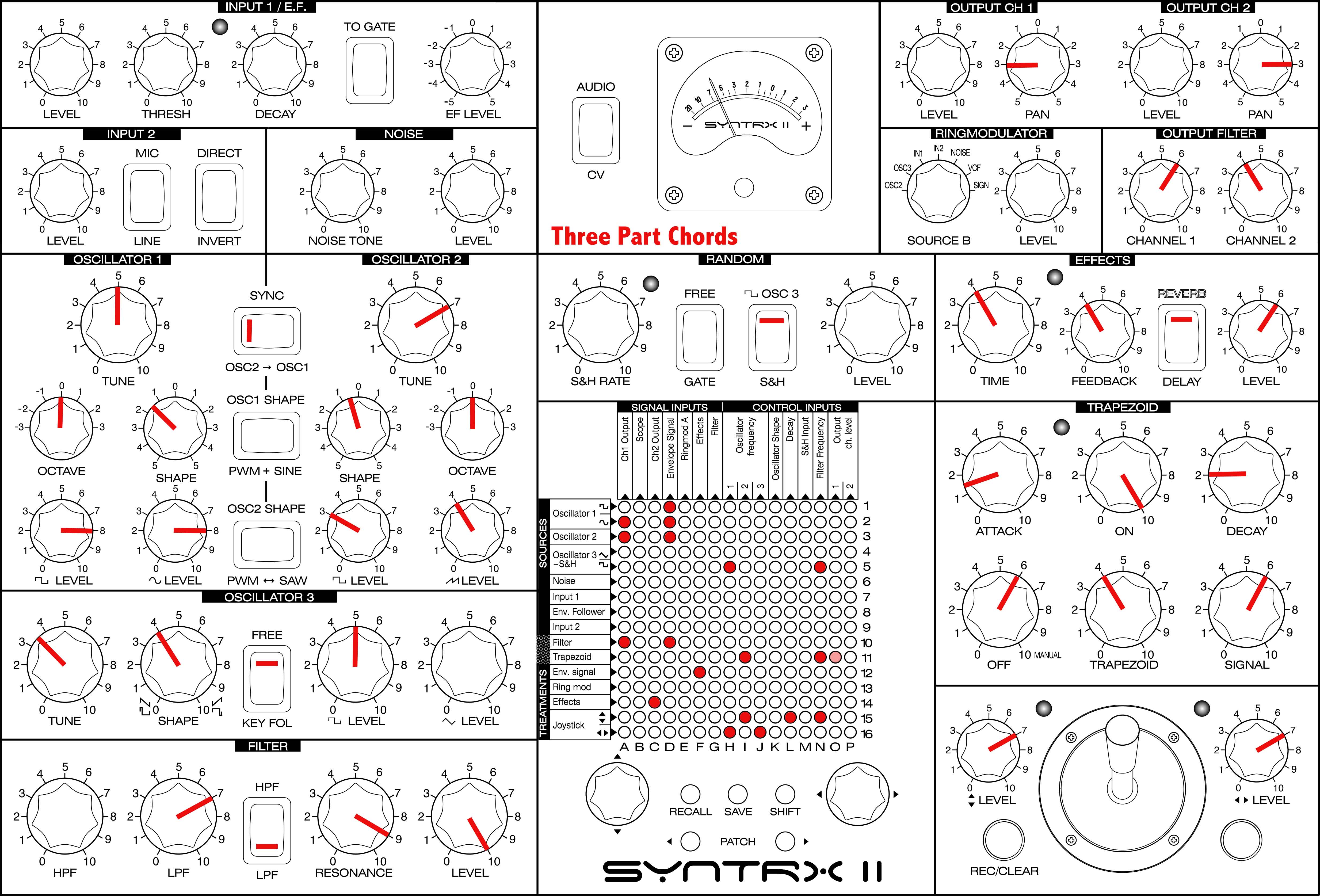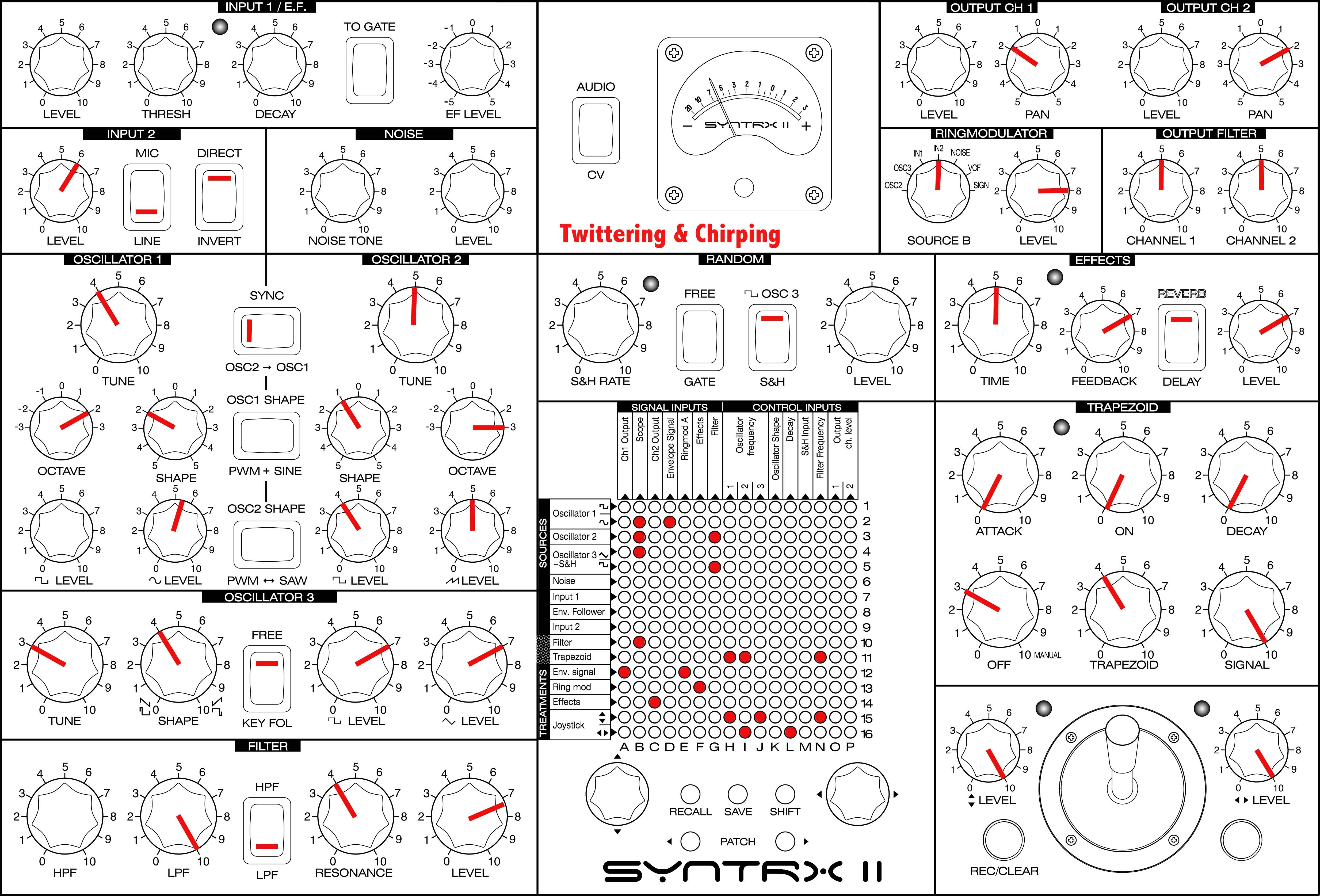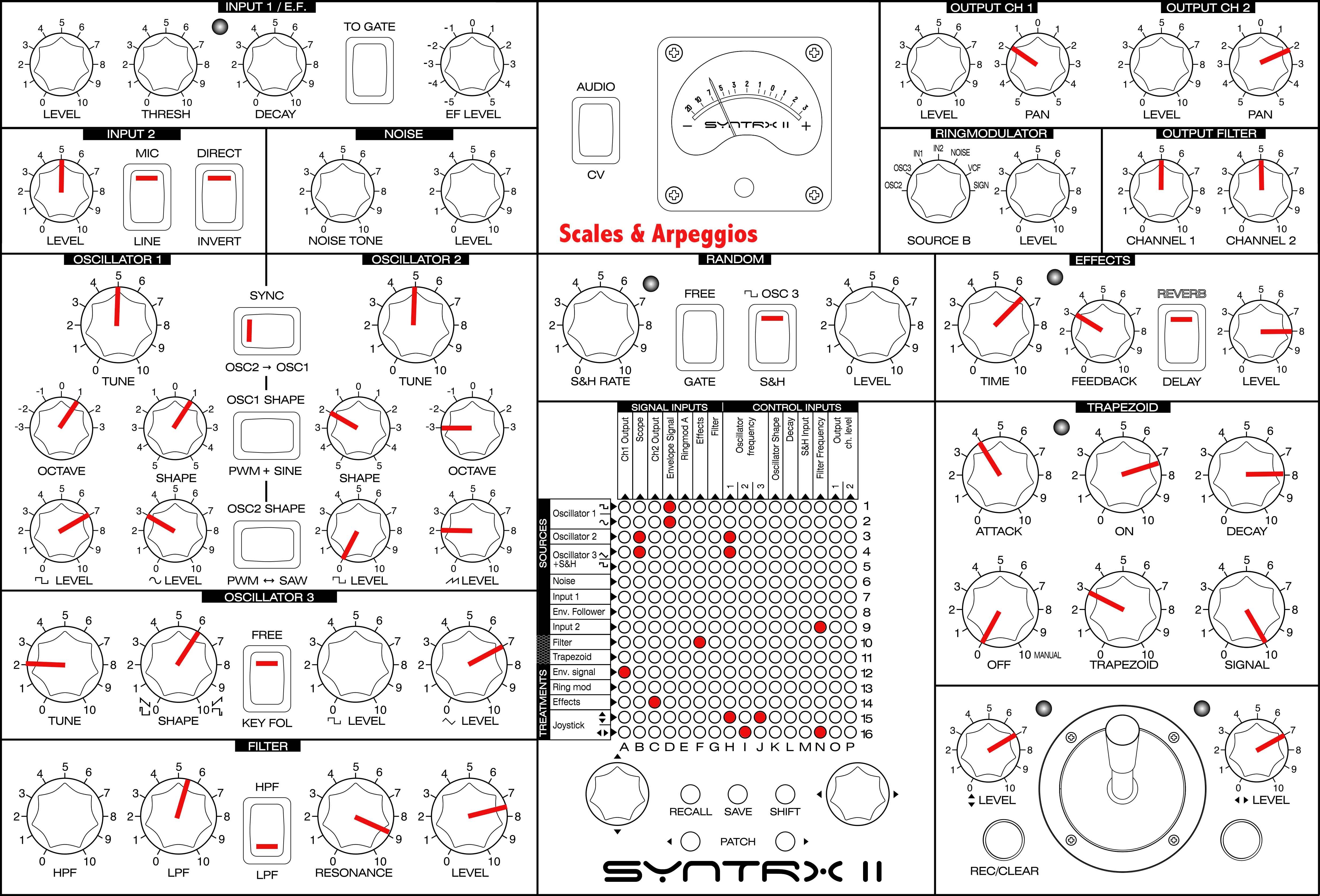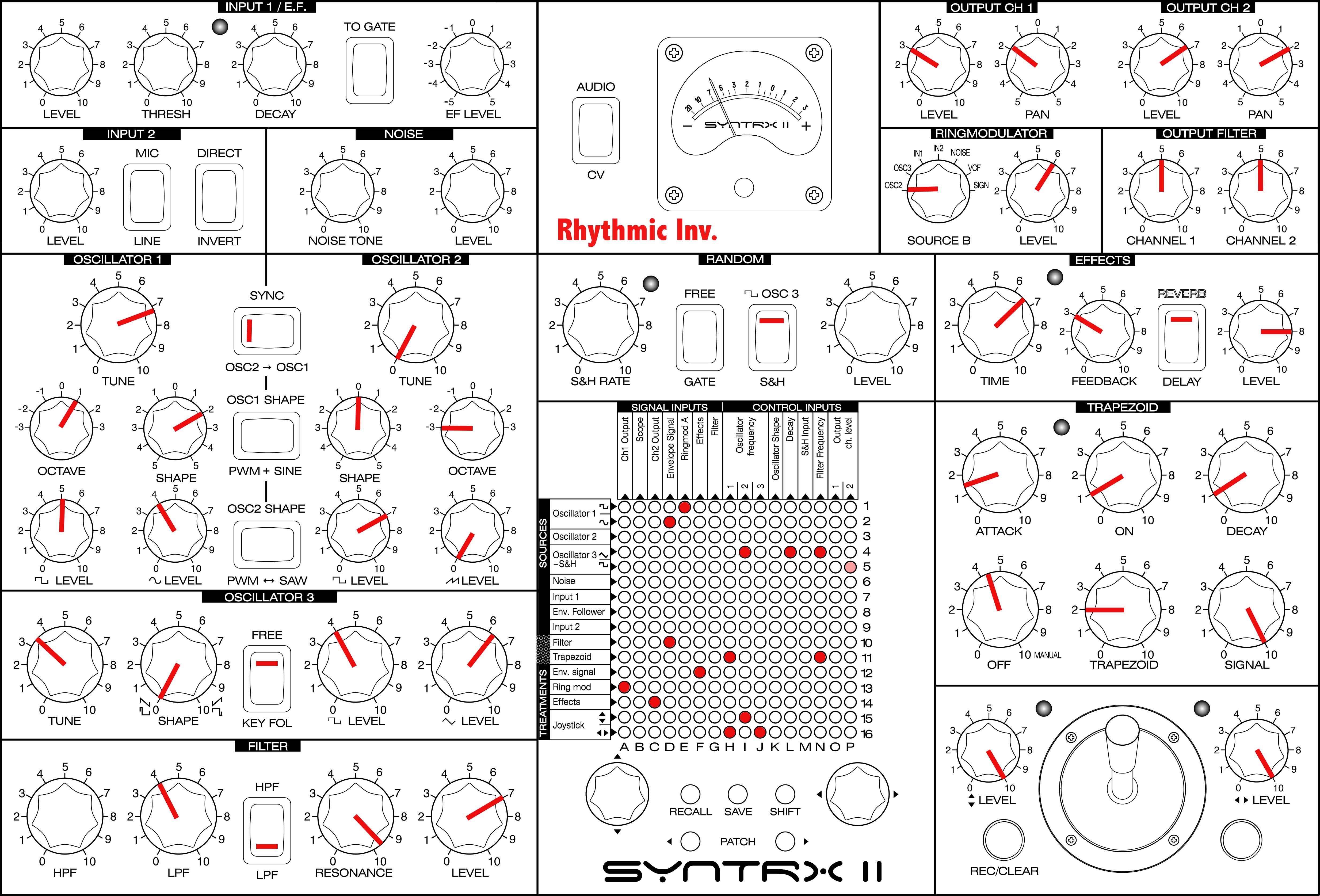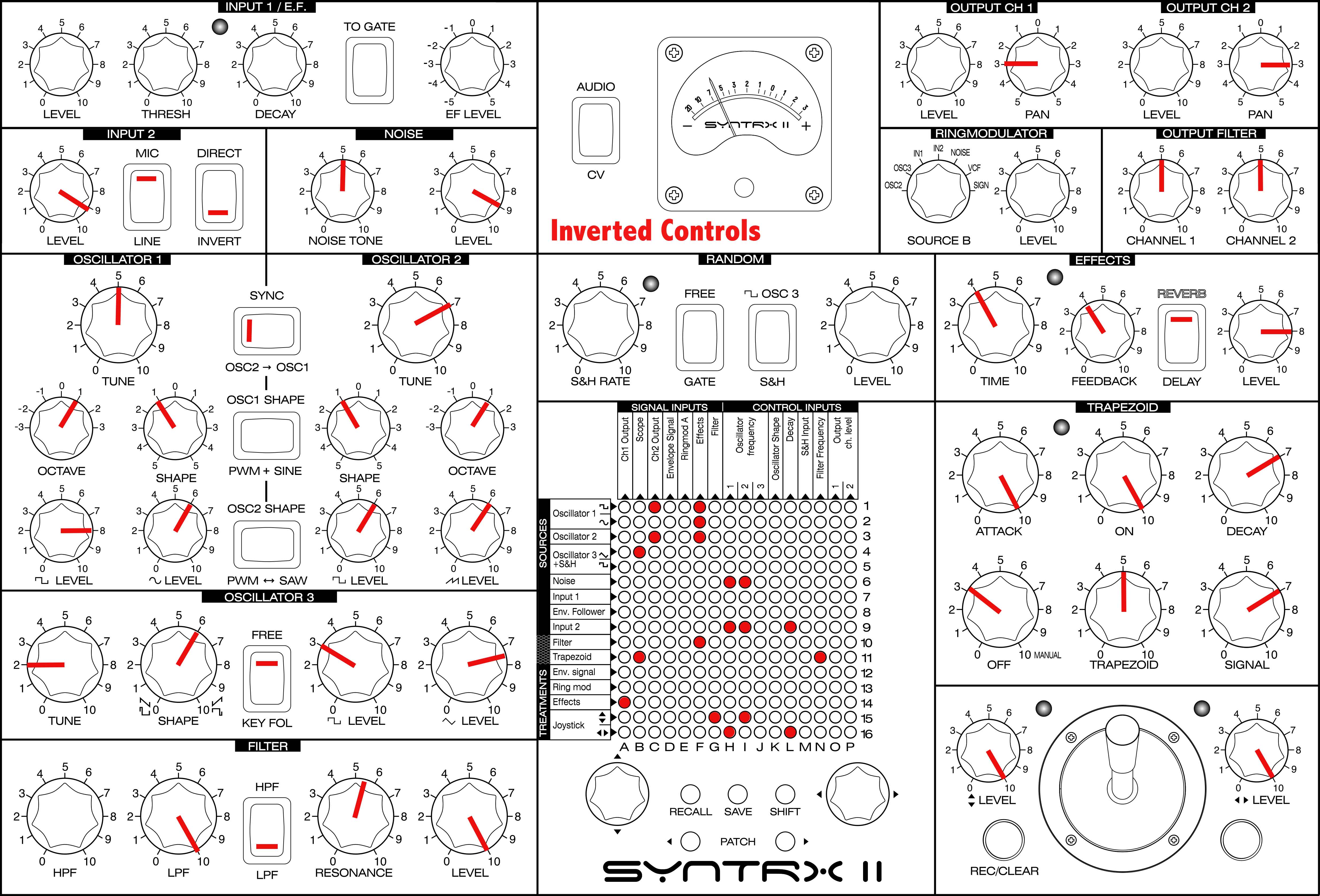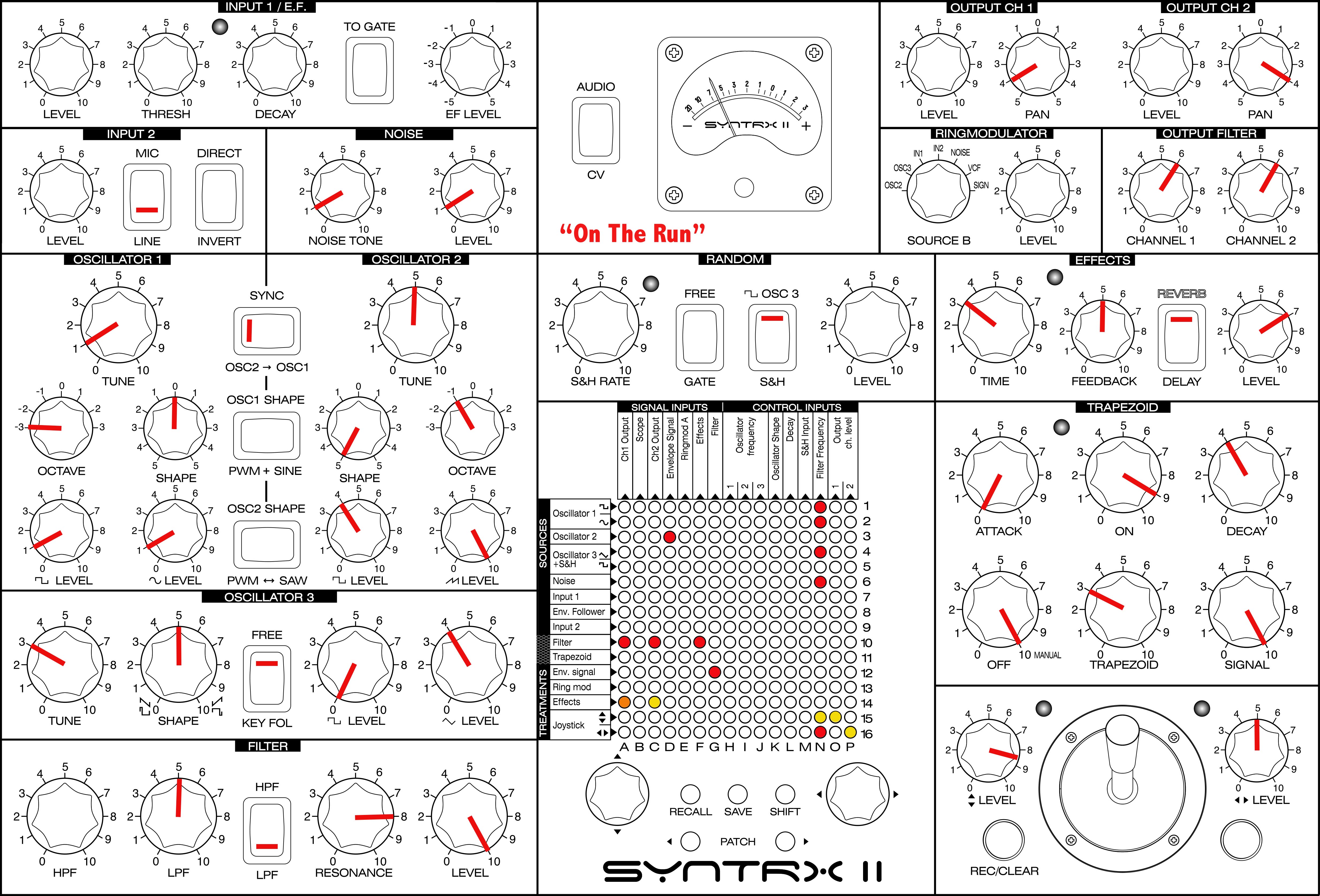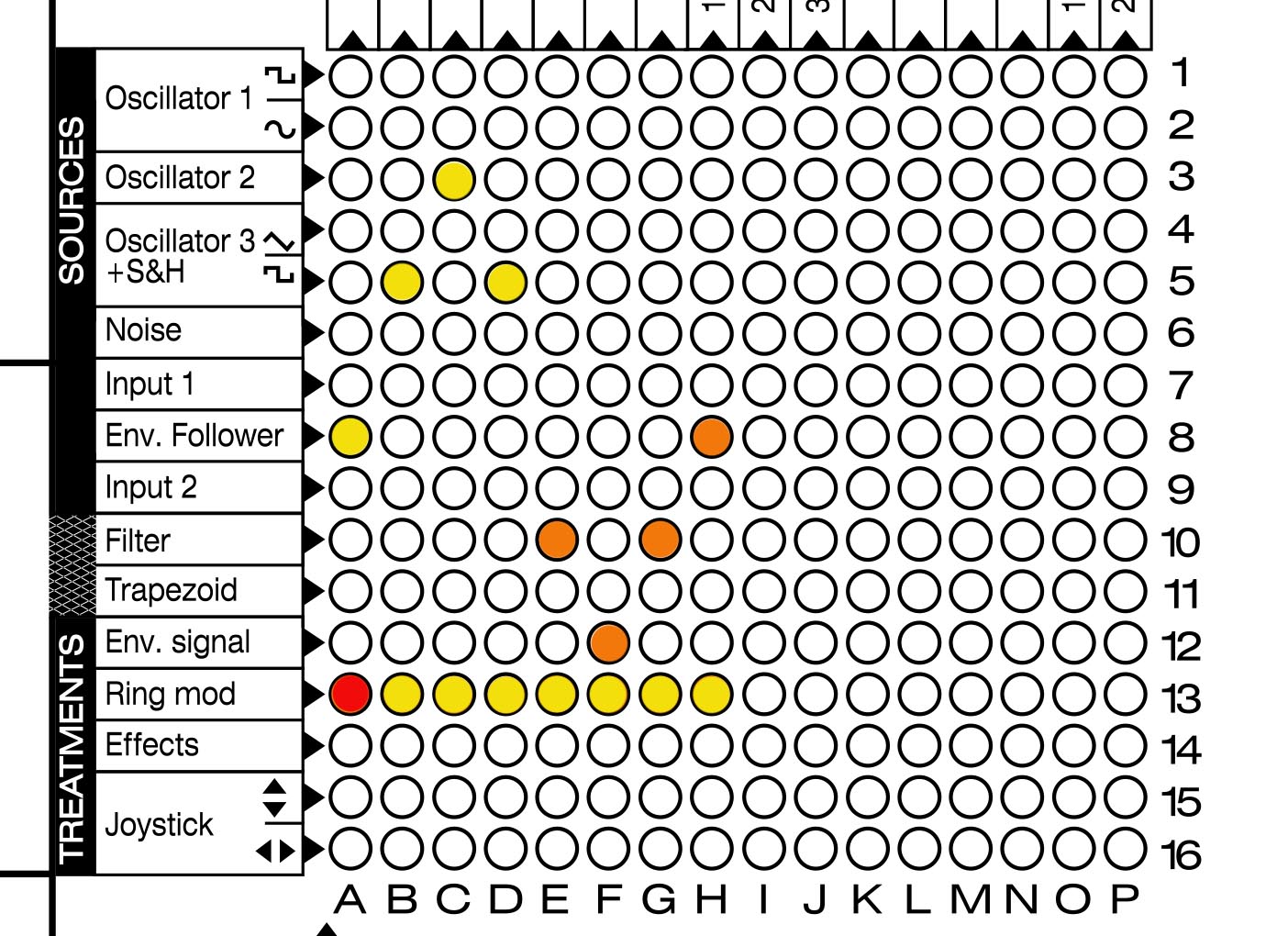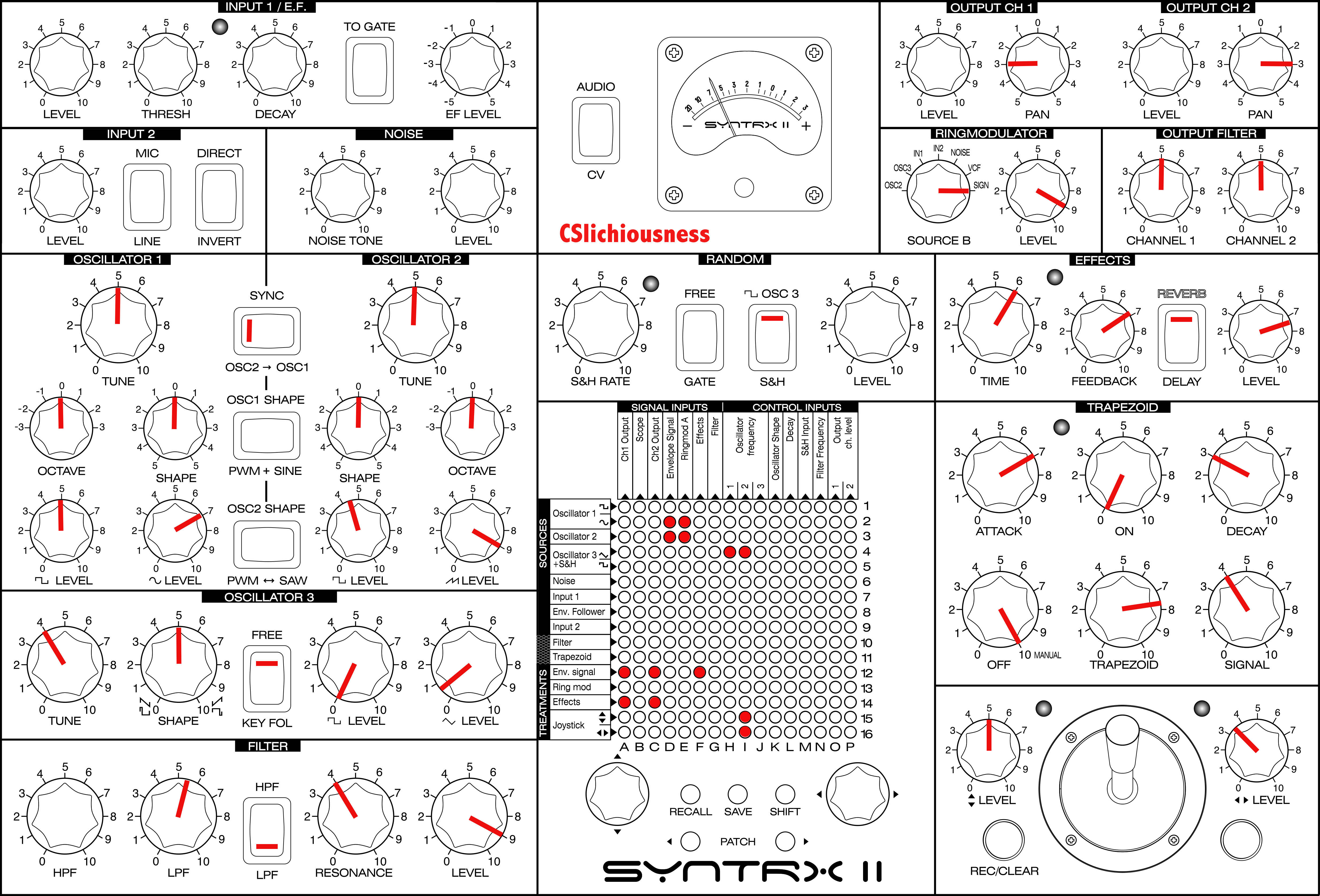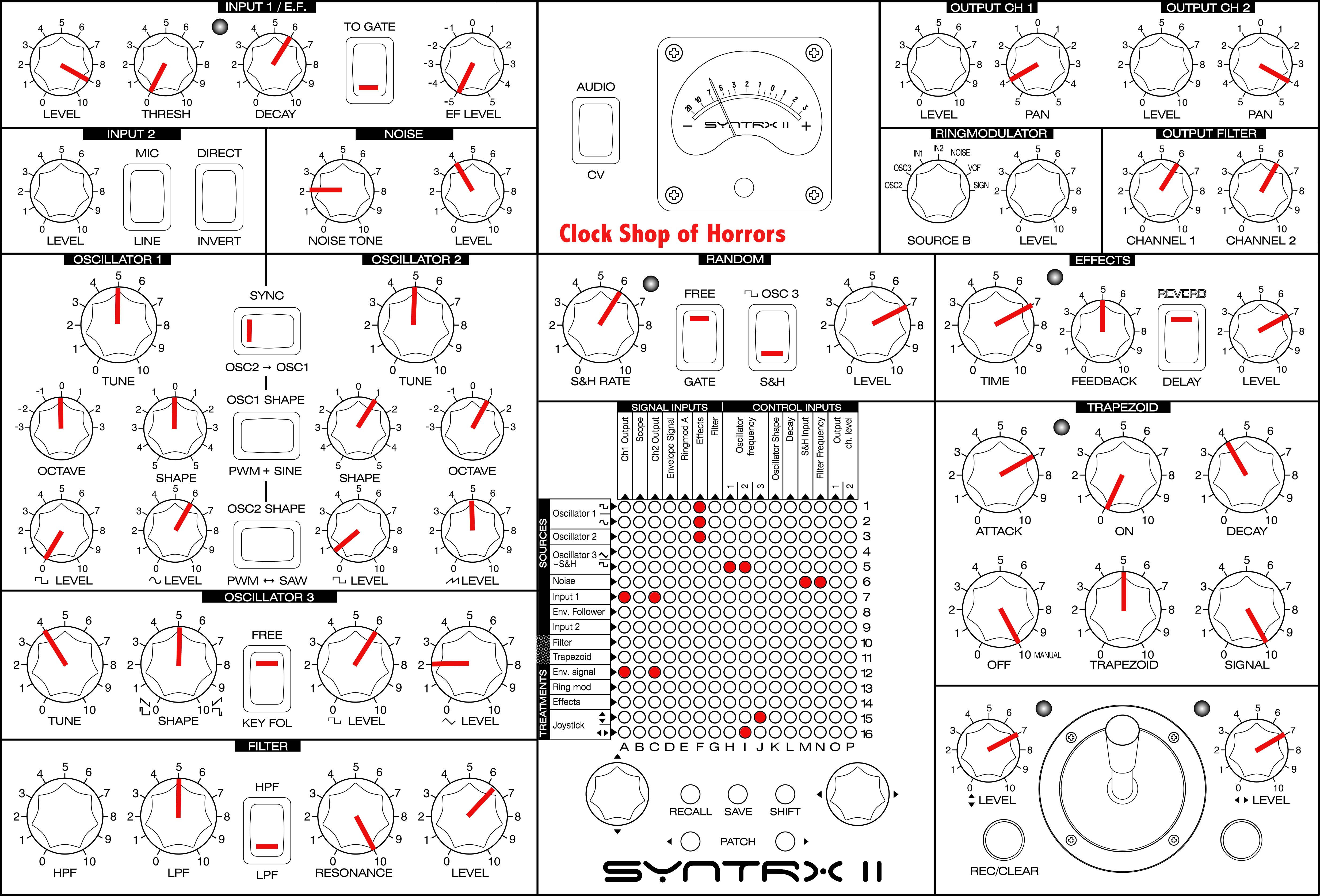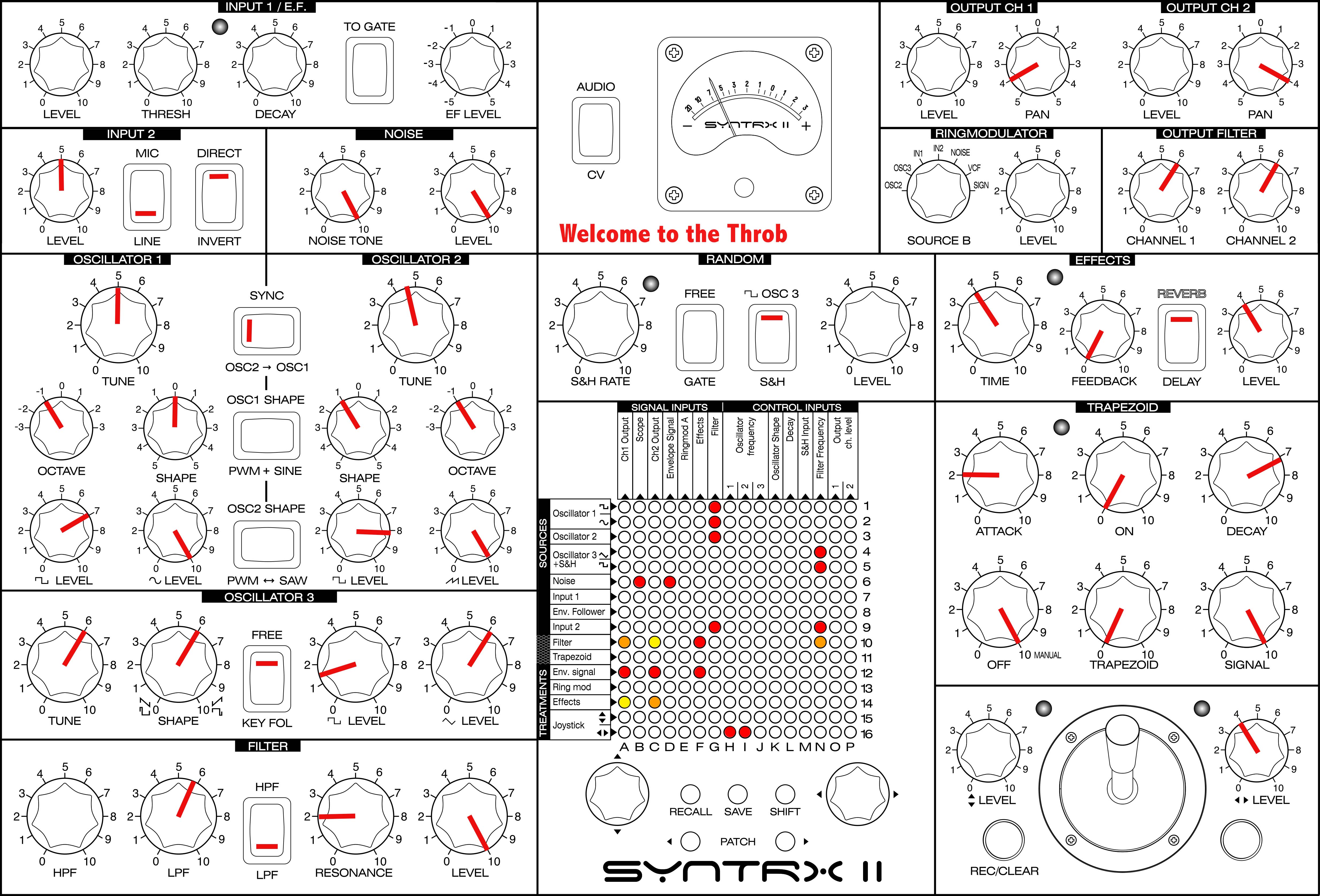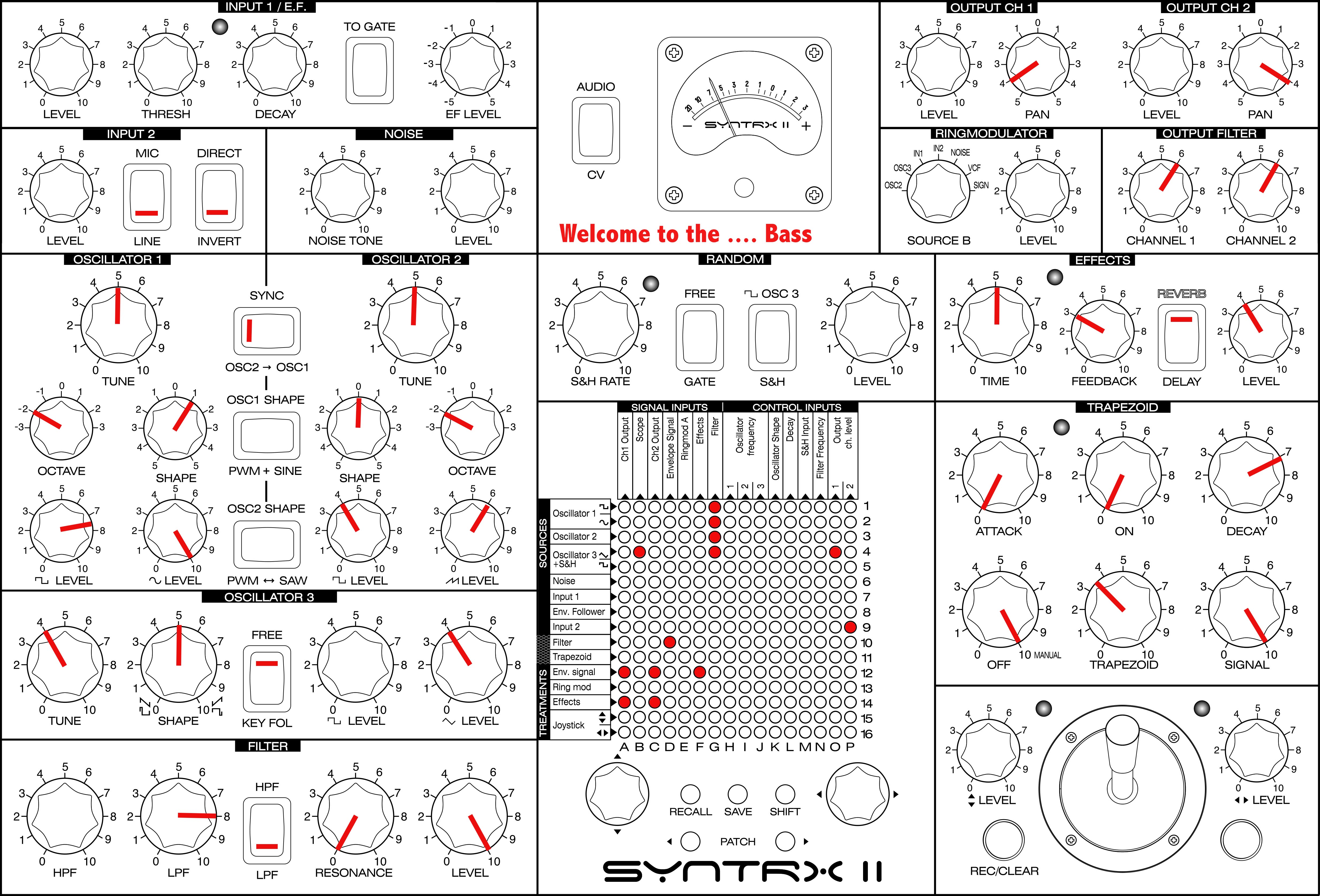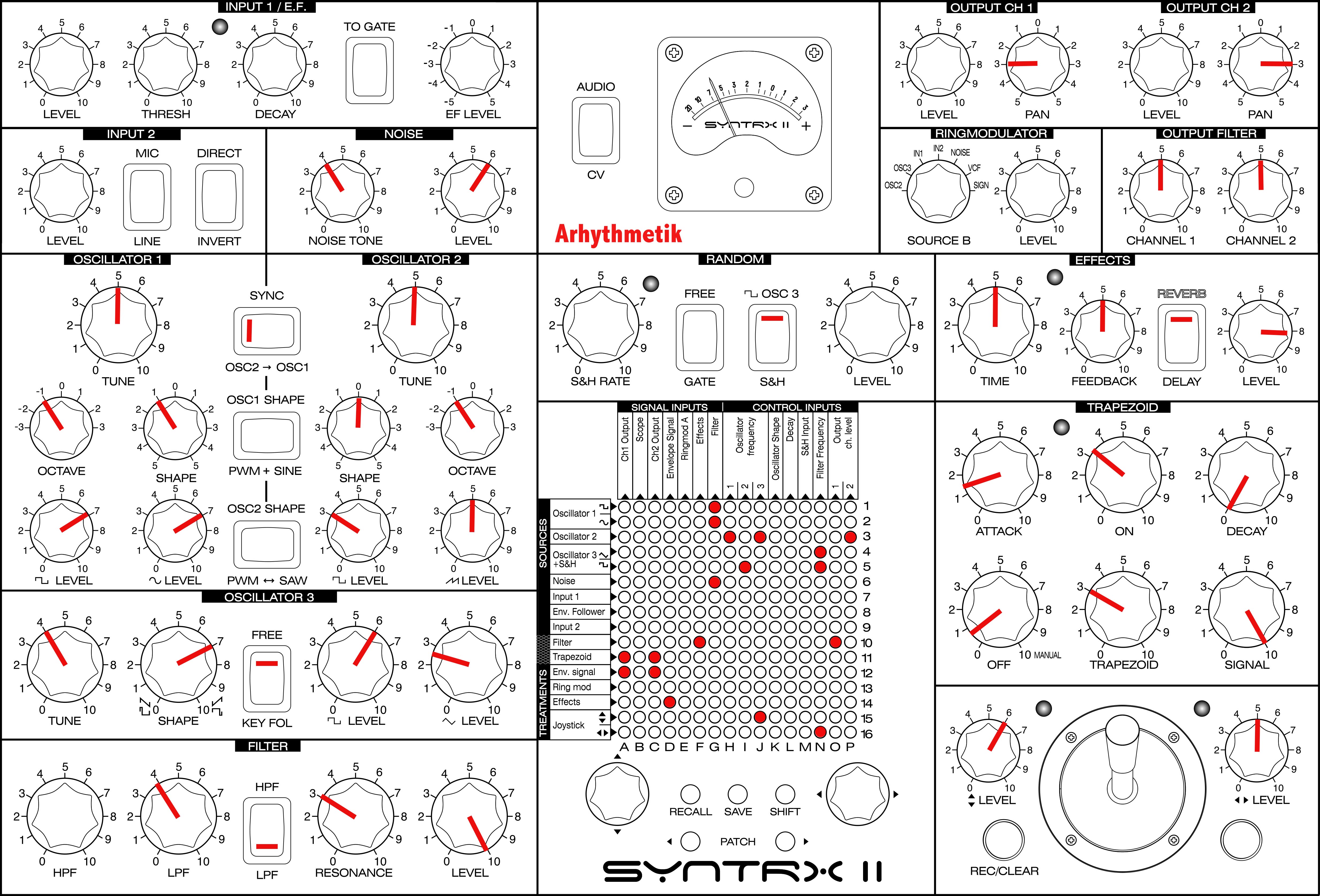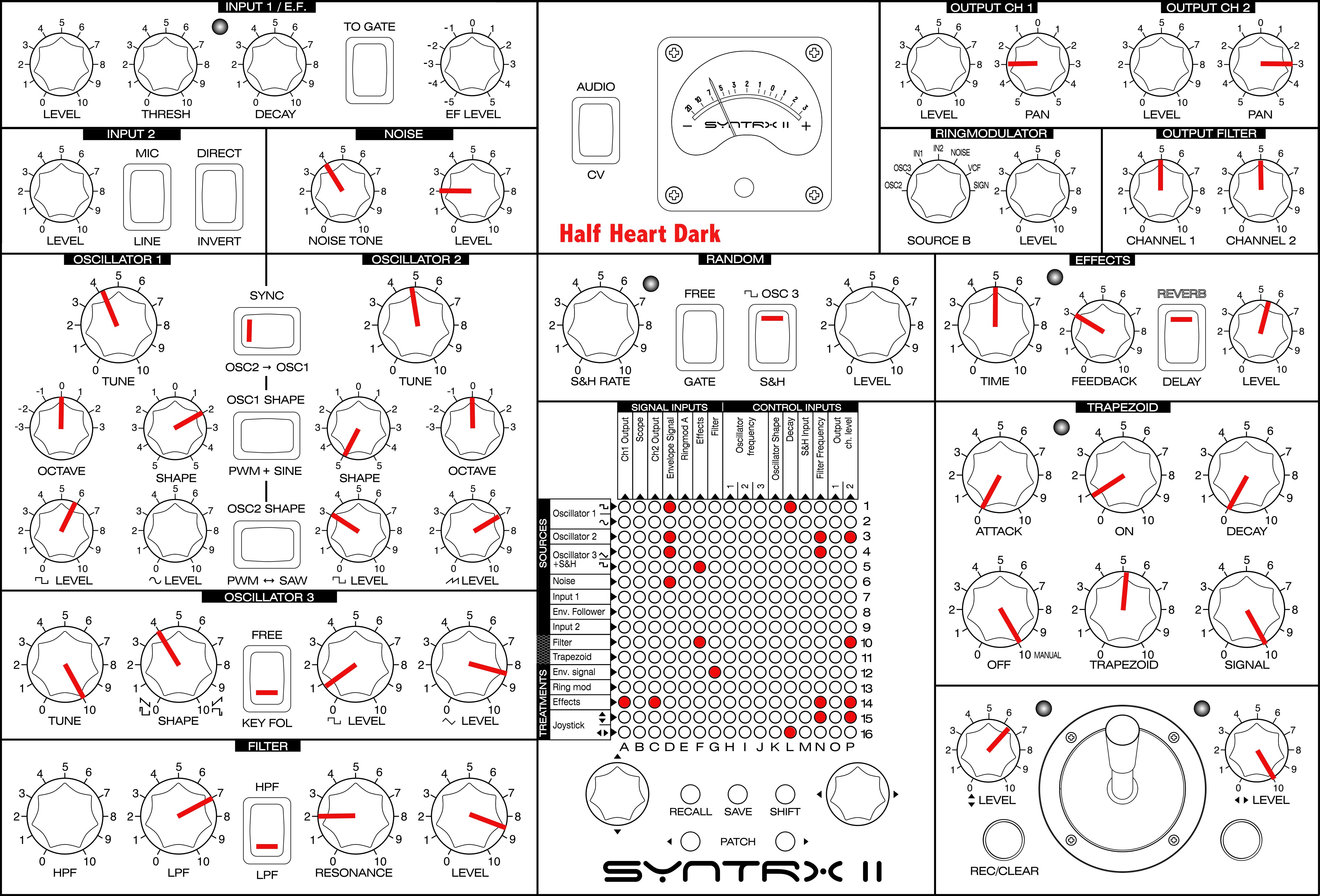The following patches have been constructed with reference to the patch examples in the original VCS3 manual from the Electronic Music Studio in London.
They are generally quite simple but clearly demonstrate the potential of the modular matrix approach recreated in Syntrx II.
When creating these patches, Patrizio Nuti replaced certain connections with equivalent alternatives to account for the small structural differences between the two instruments. He intentionally avoided using the more advanced features of the Syntrx II, to make it easier to compare the results with those from the original VCS3.
Patrizio Nuti is an Italian musician and synthesist with a lifelong passion for electronic instruments. Starting as a teenage organist and keyboard player in dance bands, he went on to perform across a variety of genres, from pop and blues to jazz. Over the years, his setup has evolved from classic instruments like the Farfisa VIP 255 and Yamaha DX7 to iconic synthesizers such as the Moog Voyager, ARP 2600, and Prophet-6, as well as modern designs like the Waldorf Iridium. A dedicated explorer of synthesis methods, Patrizio has programmed and released sound banks, built modular systems with his son, and translated Gordon Reid’s Synth Secrets series into Italian, adding his own examples.

